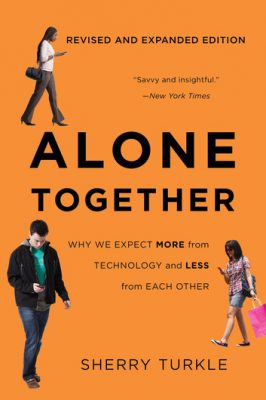
It’s been 7 years since Alone Together (2011) was published. And, here at Cyborgology (which we launched only a few months before the book came out), probably no other publication has received so much of our attention (with the possible exception of Haraway’s “Cyborg Manifesto.”
While Turkle’s earlier writings were hopeful, forward-looking provocations about the growing intimacy between humans and machines, Alone Together (as well as Turkle’s more recent Reclaiming Conversation [2015]) struck a completely different tone: a present-focused techno-pessimism. Turkle’s insistence on the intrinsic inferiority of digitally mediated interaction—that it is less real, less human—became a foil for ambivalent, nuanced analysis of technology and society that we sought to provide on this blog. In part, Turkle has become an antagonistic figure because she cherry-picks anecdotes while ignoring more systematic research on the way digital technologies facilitate social support. In part, because she epitomizes a sort of rhetoric about the ontological inferiority of the Web—its lack of realness—that has distracted from important social justice questions about how such technologies reinforce/reproduce existing inequalities and the concrete measure that can be taken to changes this.
In the recent 2017 update of the book. Turkle doubles down, referencing Darwin and embracing evolutionary biology style grand narratives in her new preface. She says, “as we evolved, people were the only other creatures who responded with us with suggestions of empathy.” (I can hear Haraway off in the distance, shouting, “what about dogs?!”) Turkle continues more...








